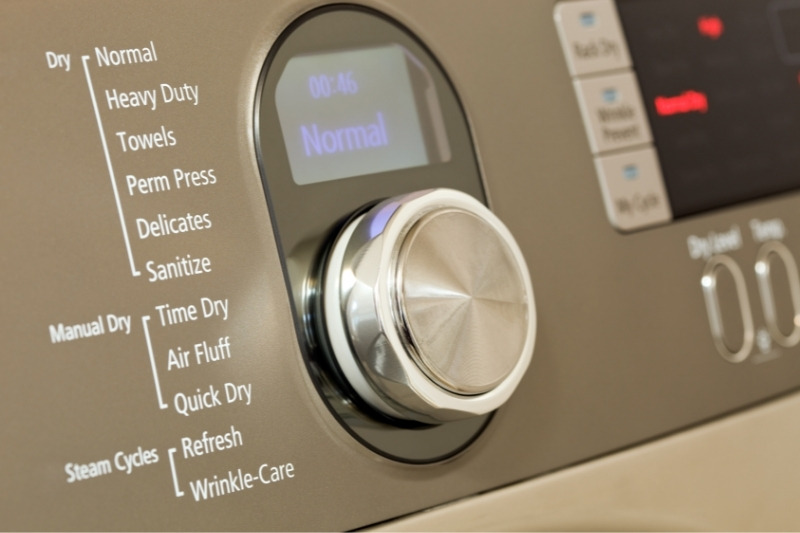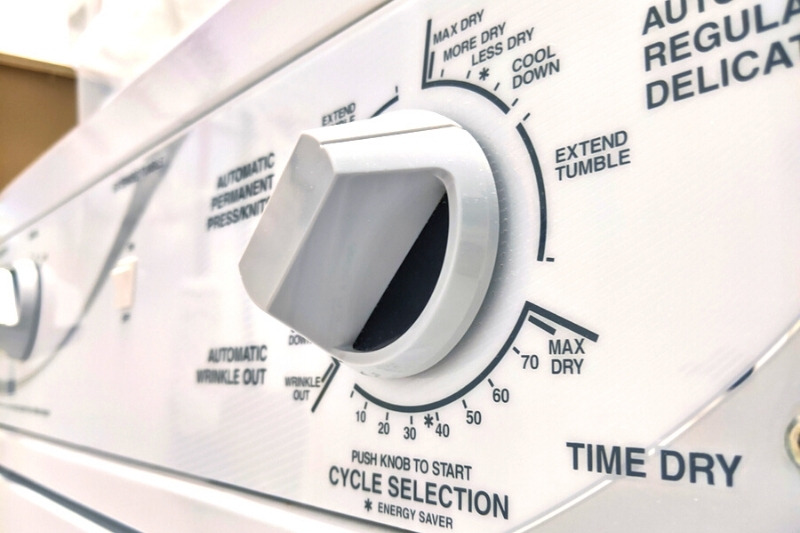There are a lot of rules and settings to follow when it comes to laundry. Though useful, these can get quite confusing. This is especially true when it comes to clothing labels.
When it comes to tumble drying your clothes, it can be hard to know which setting to pick. This is made even harder as all tumble dryers are different and therefore they don’t all have the same settings.
So, we come to the question, is ‘delicate’ the same as ‘tumble dry low’? Well, thankfully we have all the answers here. We’ll teach you the differences while also looking at some tumble drying tips. Let’s take a look!
Is the Delicate Setting the Same as ‘Tumble Dry Low’?
Both settings serve a similar purpose. They are essentially the same as both of them use a lower heat setting to ensure that clothes do not get damaged.
That being said, delicate settings may be gentler than other cycles as they are designed for garments with embellishments such as sequins, beads, or iron-on decals.
Polyester clothing may not be delicate, but it also needs a low heat setting due to potential shrinkage, so this clothing may say ‘tumble dry low’ instead of ‘delicate’.
As a general rule, if you need to keep your clothing protected in a tumble dryer, both a ‘delicate’ and ‘tumble dry low’ setting will be safe to use.
Your own machine may have one, both or neither of these settings. If it has neither, then look for a setting that uses a low temperature, such as ‘synthetic’. If in doubt, check the manual.
What Materials Should Use the Delicate Setting?

Materials that can utilise this specific setting include delicate garments, synthetics, and wool. Before tossing your clothing items in the tumble dryer, check its care label to avoid ruining your clothes.
The symbol for a low heat tumble dryer cycle is a circle inside a square with one dot in the middle. If you see this on any item of clothing then either place it in a separate low temperature cycle or air dry it instead.
A circle within a square that has a cross running right through it means you shouldn’t tumble dry it at all, not even on a low heat.
Tips for Tumble Drying

If you’re going for tumble drying, we’re here to help by giving some tips to follow for effective drying:
1. Dry similar materials together
Remember, the same fabric on garments will take almost the same time to dry. If you mix a variety of fabrics, you may be running the machine at the end to dry one or two items from the load when the others have already dried.
2. Avoid overloading or underloading
To get the best performance out of your tumble dryer, place the right amount of laundry in the appliance. If you overload it, you’ll prevent it from drying properly.
If you underload it, you’ll end up using a full cycle of energy to dry out very few items. Ideally, it should be about half full.
3. Avoid adding wet clothing mid-cycle
There are times when you get tempted to toss in a couple of wet clothes halfway through the drying process but stop! It’s bad news when it comes to efficiency.
Water in wet clothing will get absorbed by the already dried clothes. It means, the entire load will dry longer and will utilise more energy in the process. You’re better off saving those wet clothes for the next batch of items to dry or just air dry them.
4. Dry loads one after the other
If you have a bunch of laundry to dry, try drying one load right after the other. Following this process will provide the new load with adequate heat that’s already in the drum. It may only shave off a couple of minutes to your drying time. However, each bit will be helpful when you’re aiming to be eco-friendly and cut costs.
5. Avoid leaving your laundry in the dryer
Functions in select dryers like the “anti-crease feature” on Beko appliances periodically turn the drum. This happens after a programme finishes protecting your laundry from creasing. This is convenient when you can’t immediately remove your laundry from the tumble dryer. However, keep in mind the process still uses energy. If possible, remove your clothes from the tumble dryer once they’re dry.
Should You Tumble Dry Delicate Clothes?

The obvious advantage of tumble drying is its fast drying time. If you’re in a rush and need your clothes dried then it can be a great help.
Most delicate clothes shouldn’t be tumble dried, but some have the low temperature symbol indicating that they can be tumble dried at a low temperature.
Tumble drying is a tempting option, but it has its disadvantages. Tumble dryers are energy-hungry, which means an increase in utility bills. And even at low temperatures, there is still a chance you could damage or shrink delicate clothes.
Due to this, it’s usually the best idea to air dry any delicate clothes if time is not an issue. This will ensure that they don’t get damaged. Also, in a regular household washing load, you may only have a few delicate items. Putting those on a separate drying cycle from the rest of the load isn’t very energy efficient.

I’m a mother of three who loves going on fun adventures with my family. With three little ones, I’ve learned the hard way how to keep a busy home clean! I want to share my tips and tricks to make your life as easy as possible.






